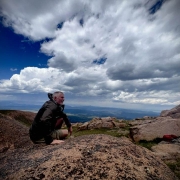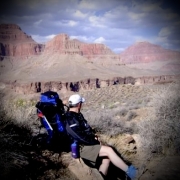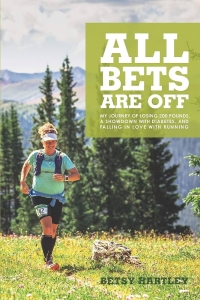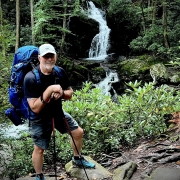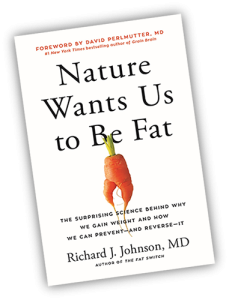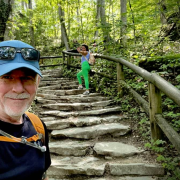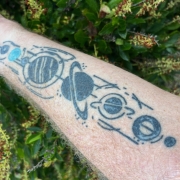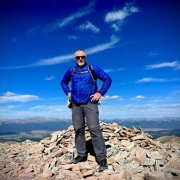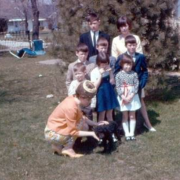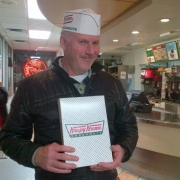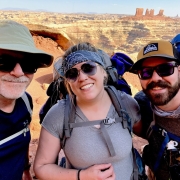Strategies for Breaking Up, Part 1 | Healthy Aging Series: Season 9, Episode 8
Why Can’t I Stay Broke Up? Because You Got Issues!
I’ve been a therapist for almost 30 years. It’s hard to believe.
In those early years, I trained as a Child and Family Therapist. Lots of parent trainings. For many of the children, I became a surrogate father. I would take them on walks through the city parks and throw frisbees. We would often stop for lunch or snacks at McDonald’s. Some of these children are in their late 30s/early 40s now.
I remember one of my young client’s name was Nick. Nick was nine years old, and I had been working with him for a couple of years. We would go to McDonald’s for lunch, and on one outing, he was eating his chicken-nugget happy meal when he noticed another little boy running through the McDonald’s.
“Mr. Mark,“ he said, “That little boy needs a therapist.“
“Why do you say that, Nick?” I asked.
“Because he’s got issues,” He responded.
Geez. I wondered where he had heard that, but also remembered that Nick had been in therapy himself for years even at nine years old.
I have thought a lot about what little Nick said and I think he’s right about lots of kids and lots of adults. When it comes to food, we all have issues, and those issues affect our breakup with food and makes it difficult to stay broke up.
We’ve been examining ways to break up with food and stay broke up. We’re going to look now at strategies for breaking up in 6 separate parts. In Part One, I’ll share some cognitive strategies, changing how you think about food and about yourself and dealing with your issues.
In Part Two (Episode 9), I’ll share some behavioral strategies called Self-Binding, because after all, I am a behavior analyst.
In Parts Three and Four (Episodes 10 and 11), I’m also going to share another obesity, memoir, entitled, “hunger: lessons learned on the journey from fat to send,” by Alan Zatkoff. Here’s what the dust jacket says: “instead of employing, the diet, du jour, and other weight loss foods, he began to focus less on what he ate, and more on the physical and emotional underpinnings of what he came to understand as a disease.”
In Parts Five and Six (Episodes 12 and 13), I’ll share about a Twelve-Step Program called, Overeaters Anonymous.
Let’s get started!
1. If you’re going to break up and stay broke up with food, you must change the way you think about food.
I want to introduce you or re-introduced you to book I wrote about back into 2019. The book is, “The Beck Diet,” by Judith Beck. It isn’t really a diet book. It’s a book on strategies for following a diet using Cognitive Behavioral Strategy. “Cognitive therapy,“ she writes, “helps you identify your sabotaging, thinking, and effectively respond to it, so you feel better, and can believe in helpful ways.“
I call these sabotaging thoughts my “Inner Demons.” Several years ago, I was talking to my good friend, Sam, about working out five days a week at Premier Fitness, which included using a personal trainer, kickboxing, powerlifting, and spin. “Looks like you’ve become addicted to working out,“ He commented. I informed him that I already have plenty of demons that I wrestle with, and I don’t need to worry about whether I’m becoming addicted to exercise.
Here are some of my demons!
- I work out so I can eat whatever I want.
- That one cookie isn’t going to ruin my diet.
- I can have a breakfast sandwich from Panera just this morning.
- I shouldn’t deprive myself from everything, YOLO!
- “I’ll work it off tomorrow.”
These are my demons. Beck’s book is splendid and helps you change how you think about food.
2. If you’re going to break up with food and stay broke up, you’re going to need help.
I used a Personal Trainer throughout most of my 50s. There are other professionals, Certified Health Coaches, that have trained solely for the purpose of helping people lose weight. There are support groups and 12 step groups that focus on overeating. Weight Watchers or WW offers weekly or monthly meetings, both in person and via online. And there are many therapists that focus on the body-mind connection and offer support for exercising nutrition.
There are churches that offer classes and support groups for weight loss and nutrition. Beck recommends that you find a Diet Coach. According to Beck, here’s what they can do for you:
- Keeps you motivated.
- Builds your self-esteem.
- Helps you solve eating problems.
- Keeps you accountable.
- Helps you take a more positive perspective.
Ask, what would my coach say?
The Overeaters Anonymous Program includes a sponsor, or diet coach. Beck suggests recruiting a diet coach from close friends or family members. Or maybe someone that has been successful losing weight or breaking up with food and staying broke up.
3. Focus on Incompatible Behaviors.
Incompatible behaviors are behaviors that make it difficult to engage in what we generally call target behaviors. Target behaviors in this sense would be overeating or eating food that is inconsistent with your diet plan. What are some of those incompatible behaviors?
Exercise
It seems to me that if you’re exercising, you’re not eating. There are lots of things that you can do that are incompatible with eating. This means first looking at your eating patterns. Where do you eat, when do you eat, how much do you eat, and what do you eat, and then, develop a plan to change these variables.
In the Applied Behavior Analysis world, we call these contextual variables for eating your “trigger” foods as some define them. If you know Behavior Analyst, they can do a mini Functional Behavioral Assessment that will help you uncover your contextual variables.
If not, just start writing down and looking at where, when, What, who and yes why you eat and then write a Behavior Plan.
If you find that you snack at night while watching TV, break up with food by doing something else at that time. Like learning to play the guitar or practicing Mario kart. Change it up in some way.
4. If you’re going to break up and stay broke up with food, you will need to develop a written plan and revise it often.
This isn’t a diet plan, but a lifetime. You’re going to look at all the aspects of your life and change them. If you’re going to change your relationship or break up with food, you need to change your whole life. Don’t think you can read a diet book, like a Mediterranean diet, and think that your relationship with food will change. Let me say something very important, a major takeaway from this blog: You are following a diet as we speak. I’m following the Mark Neese diet. You’re following the: fill in the blank diet. And you are deeply entrenched by it. It is a way of life for you. Your diet is a way of life!
Read that again, and if it is a way of life for you, then you will need a plan to change your life. The biopsychosocial model that we use as therapists looks at all aspects of your life. Relationships. Education. Health and physical aspect. Spiritual and mindfulness approach. Social aspects. Employment. Hobbies. Recreation.
Compare this with it with the list of contextual variables that evoke or increase the risk of toxic eating. Develop a breakup plan. Example: my plan is 8 to 10 hours of exercise per week. Eat lots of fruits and vegetables. Decreased eating out. Increase time spent with time restricted eating. Increase fruits and vegetables. I use squeeze fruits and vegetables when I’m driving throughout the city. I have a life planned that guides me. I am revising it even now.
5. If you’re going to have a breakup with food, or with your old, toxic lifestyle, you need to practice this principle: Easy Does It.
Throughout my years of practicing as a Family Therapist, Personal Trainer, and throughout my personal life, I have used the principle of Easy Does It. Slow things down. Don’t push too hard be gentle.
Changing Your Life
Strategies for breaking up with food are basically strategies for changing your life, because your diet is really a reflection of your lifestyle.
I’ve suggested five strategies that will make breaking up more likely. I have a few more to share in part two of this blog. Stay tuned.
To read more entries in the Healthy Aging series, click here.

